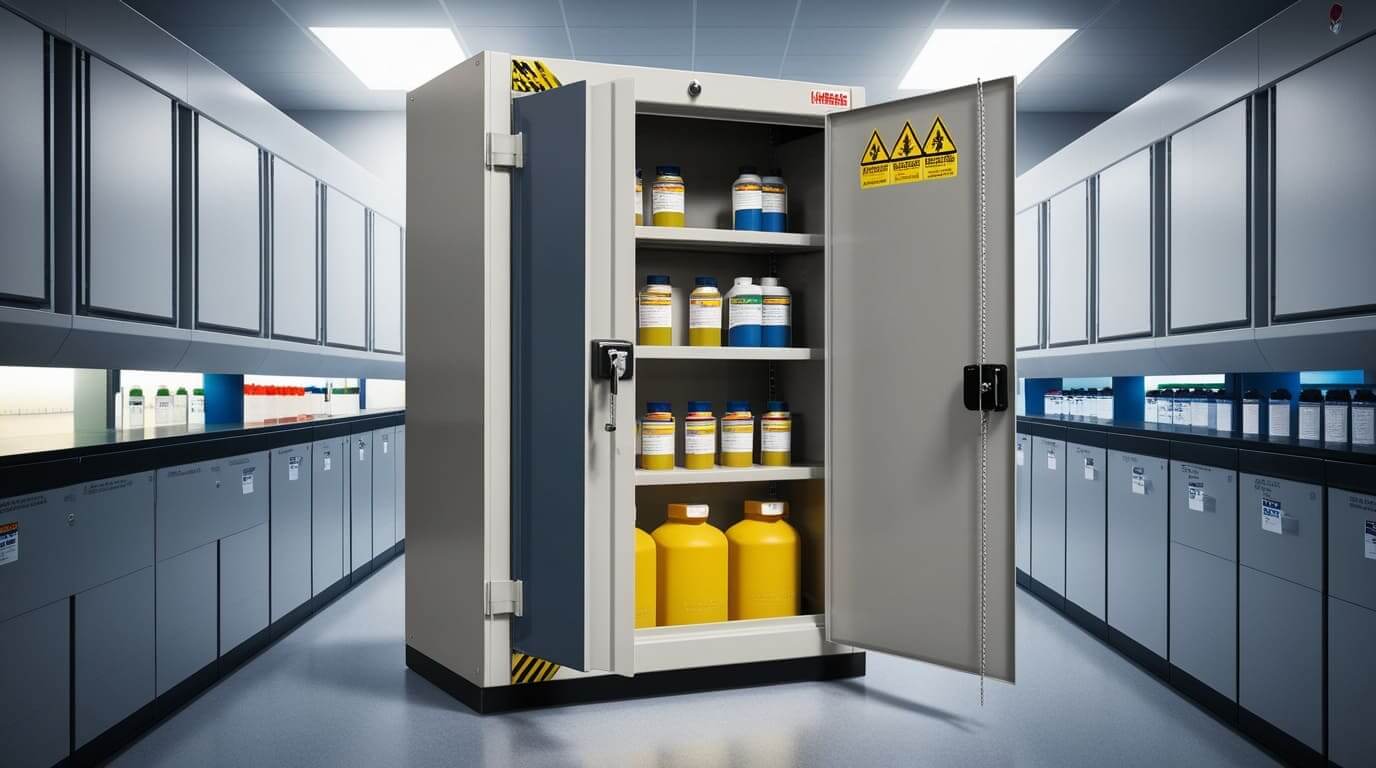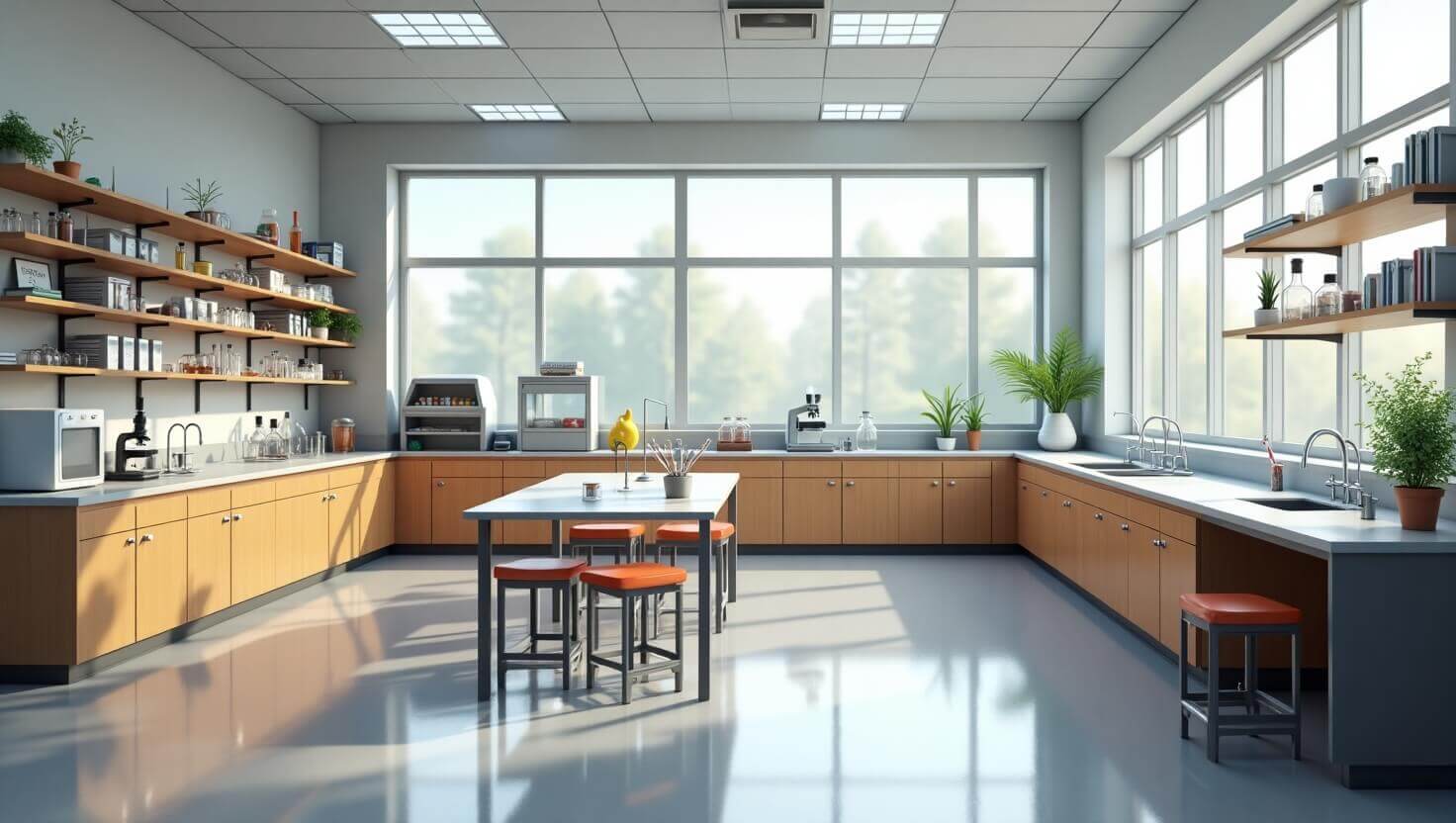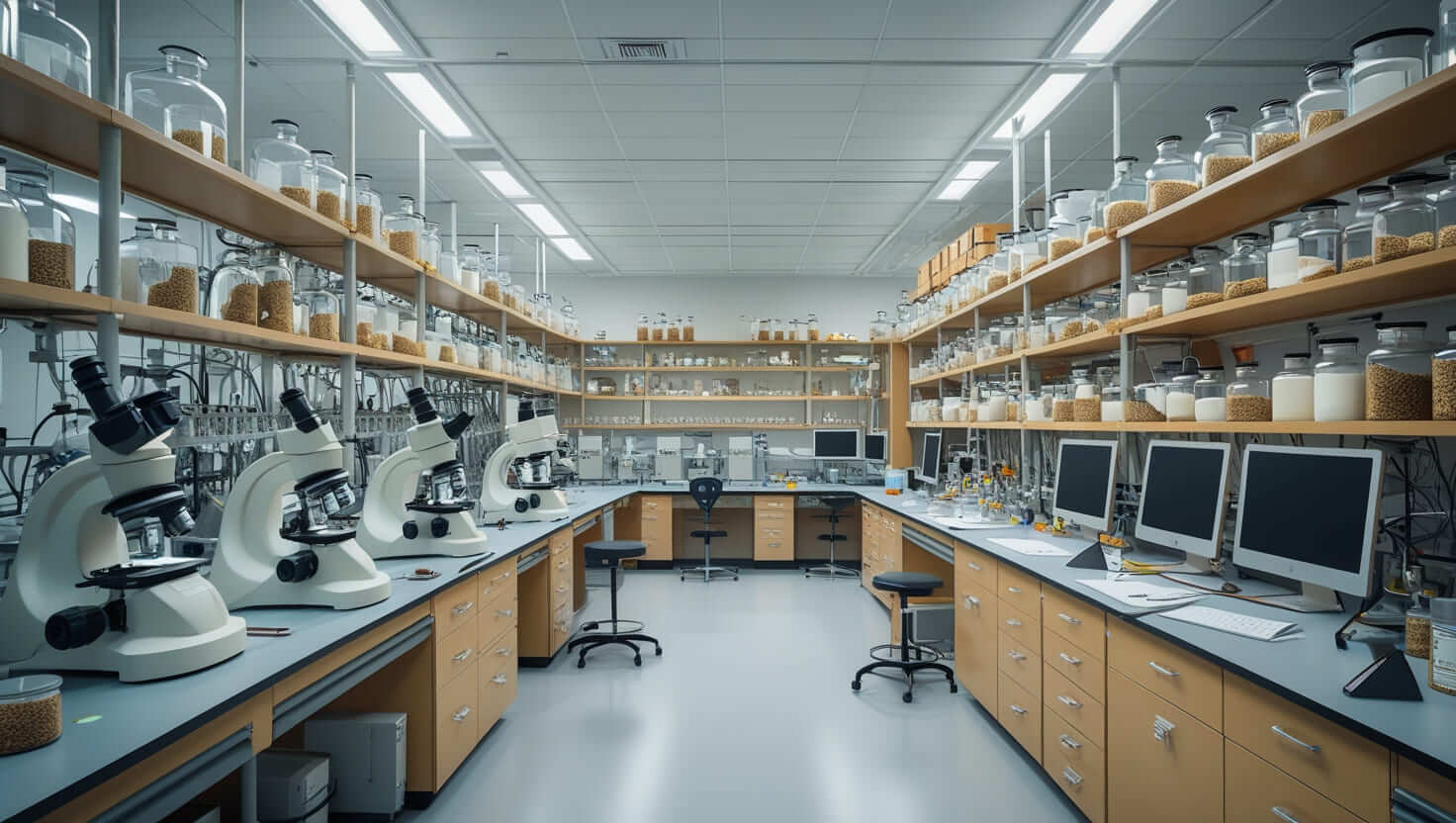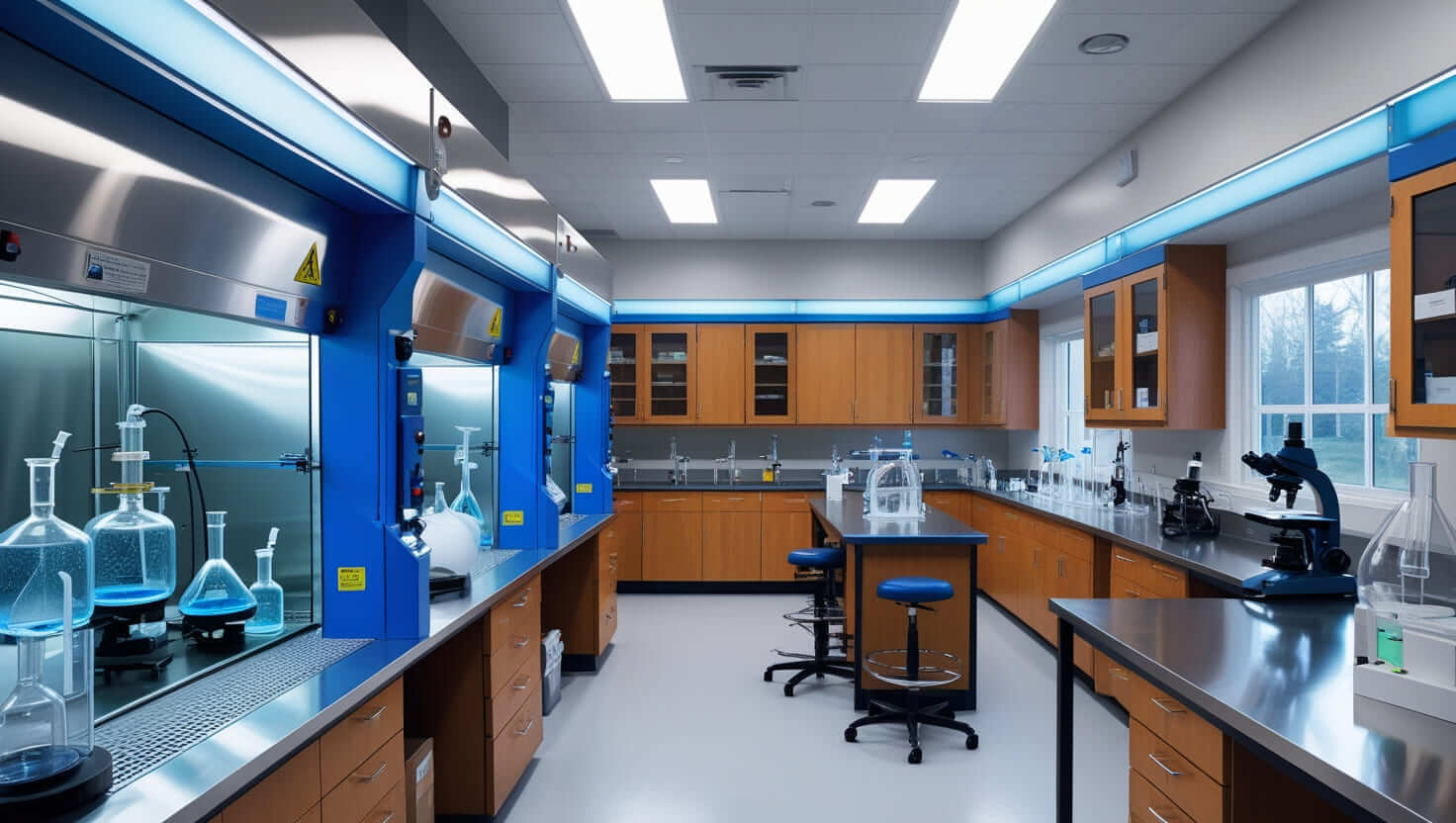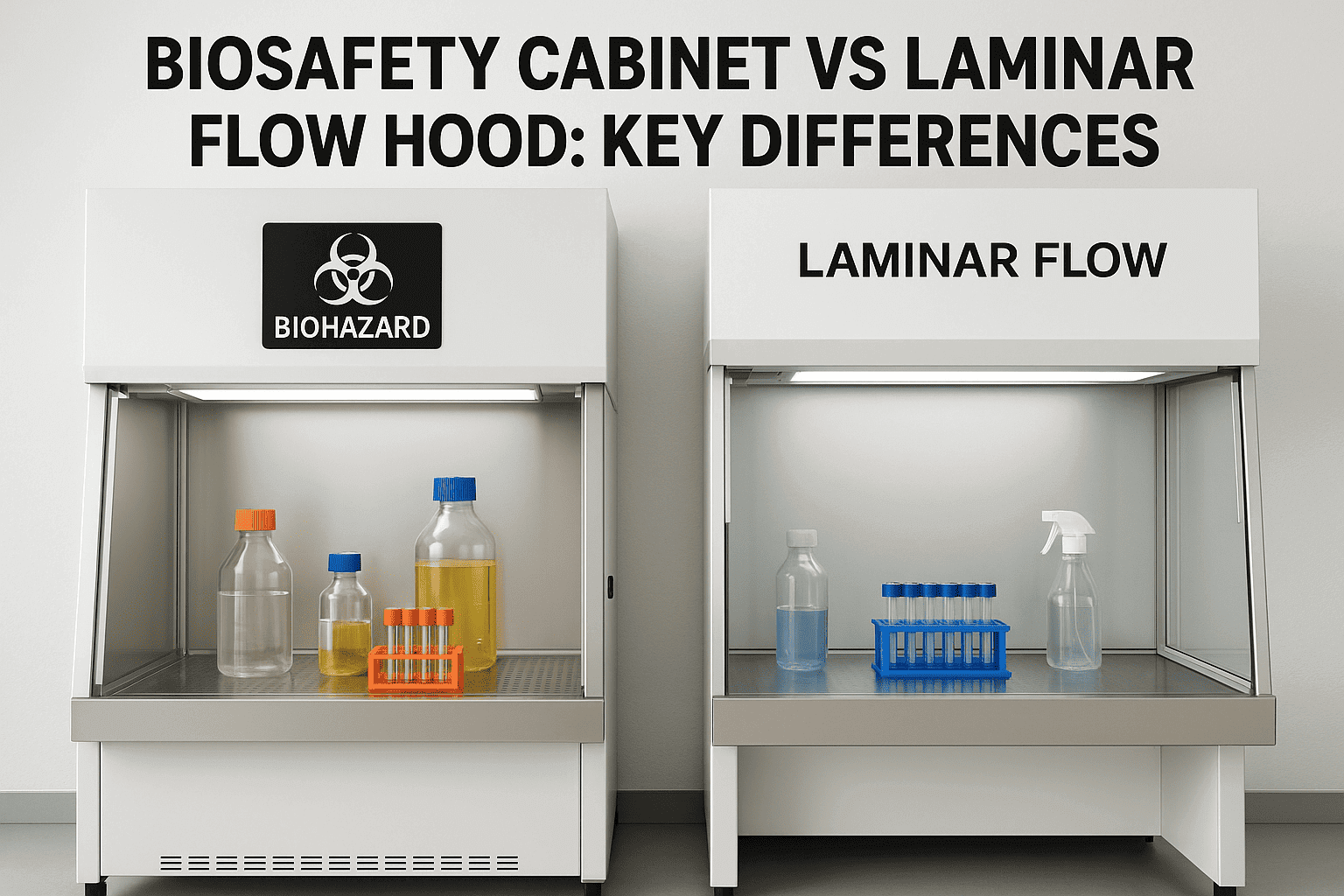
In laboratory environments, maintaining sterile and safe conditions is crucial for research and the handling of sensitive materials. Two essential pieces of equipment often discussed in this context are the biological safety cabinet and the laminar flow cabinet. While they might appear similar at first glance, they serve different purposes, and understanding their distinctions is vital for lab professionals and researchers. This article will explore the differences between these two cabinets, their applications, and how they contribute to laboratory safety and efficiency.
What is a Biological Safety Cabinet?
A biological safety cabinet (BSC) is specifically designed to protect the laboratory worker, the environment, and the material being handled from exposure to harmful pathogens or biological agents. BSCs are widely used in microbiology labs, pharmaceutical research, and clinical testing facilities.
Key Features:
1- Airflow System: BSCs use a specialised airflow system that includes HEPA filters to trap harmful microorganisms, preventing them from escaping into the lab environment.
2- Containment: The cabinet provides containment for infectious agents, ensuring safety when handling viruses, bacteria, or other potentially hazardous biological materials.
3- Types: There are three main types of BSCs—Class I, II, and III—with Class II being the most common in laboratories, providing both worker protection and product protection.
The primary focus of a BSC is safety, ensuring that neither the user nor the surrounding environment is exposed to potentially dangerous materials.
What is a Laminar Flow Cabinet?
A laminar flow cabinet (LFC) is designed primarily to protect the work material from contamination rather than to protect the user. It achieves this by maintaining a continuous, unidirectional flow of filtered air across the work surface.
Key Features:
1- Unidirectional Airflow: The use of laminar air flow ensures that air moves in a uniform direction, typically from top to bottom or back to front, reducing the risk of particulate contamination.
2- HEPA Filters: Like BSCs, laminar flow hoods also use HEPA filters to remove dust, microbes, and other particles from the air.
3- Types: There are horizontal and vertical laminar flow hoods, each suited to different laboratory applications depending on the workflow and equipment layout.
Unlike BSCs, laminar flow cabinets do not protect the user from hazardous materials. They are ideal for tasks that require a sterile environment, such as electronics assembly, media preparation, and certain pharmaceutical operations.
Key Differences Between Biosafety Cabinets and Laminar Flow Hoods
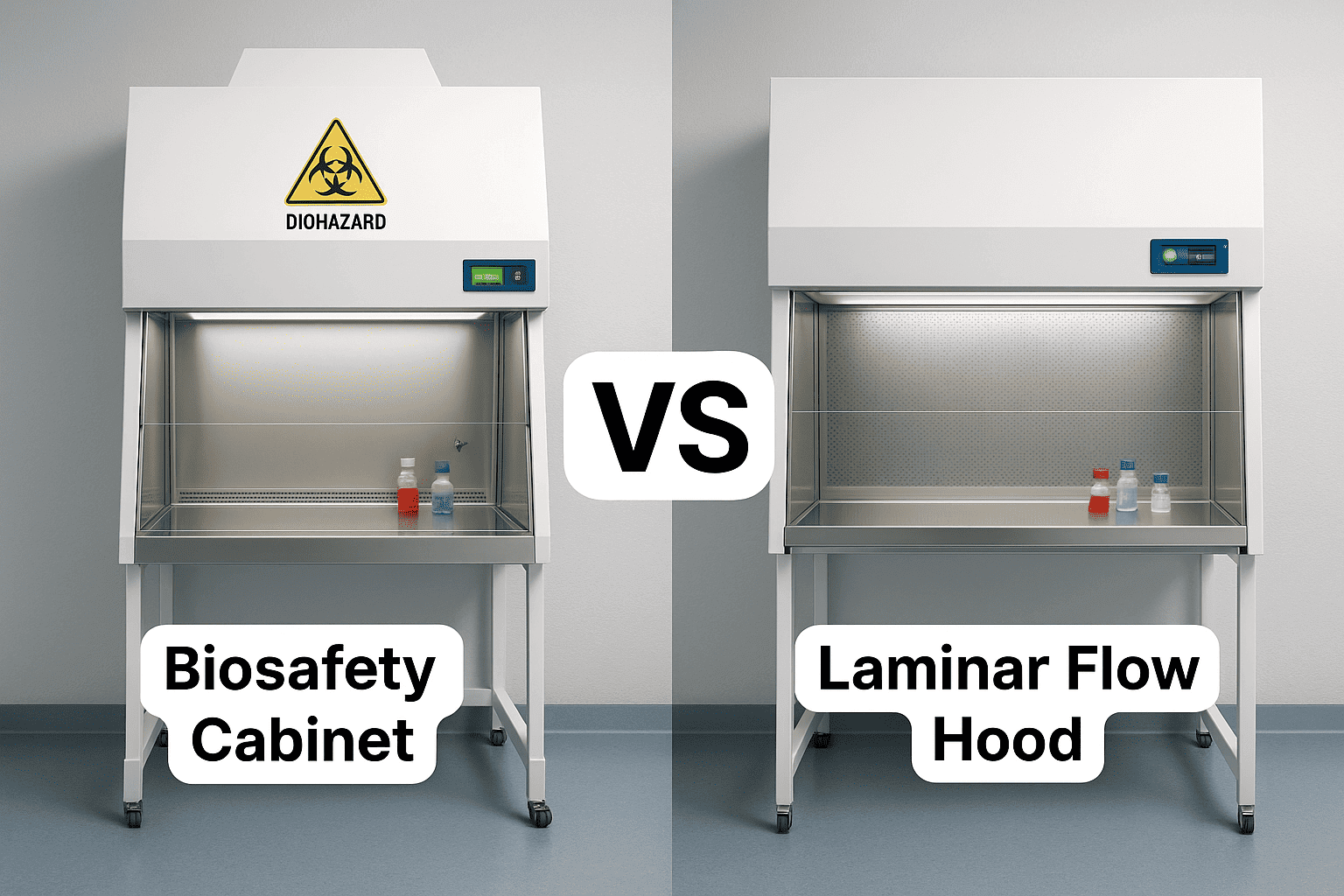
Understanding the differences between a biological safety cabinet and a laminar flow cabinet is critical for selecting the right equipment for your laboratory needs. Here’s a detailed comparison:
| Feature | Biological Safety Cabinet | Laminar Flow Cabinet |
| Primary Purpose | Protects the user, environment, and product | Protects only the product/material |
| Airflow Direction | Air moves into the cabinet to contain contaminants | Air flows uniformly over the work surface to keep the material sterile |
| Protection Level | High designed for handling hazardous biological agents | Moderate; does not protect the user from harmful agents |
| HEPA Filters | Filters both incoming and outgoing air to prevent contamination | Filters air entering the cabinet to keep the workspace clean |
| Common Applications | Microbiology labs, virology, clinical testing | Sterile media preparation, electronics, and pharmaceuticals |
The table makes it clear that while both cabinets use HEPA filters and controlled airflow, their purposes differ significantly. Choosing the wrong cabinet could compromise safety or sterility, depending on the lab task.
Applications and Use Cases
Biological Safety Cabinet:
- Handling infectious agents in microbiology or virology labs.
- Pharmaceutical research involving live cultures.
- Clinical laboratories conducting diagnostic testing.
- Situations requiring triple protection: user, environment, and product.
Laminar Flow Cabinet:
- Preparation of sterile culture media.
- Assembly of sensitive electronic components.
- Pharmaceutical compounding that requires a contamination-free environment.
- Research experiments where product sterility is essential but no hazardous materials are present.
Maintenance and Operational Tips
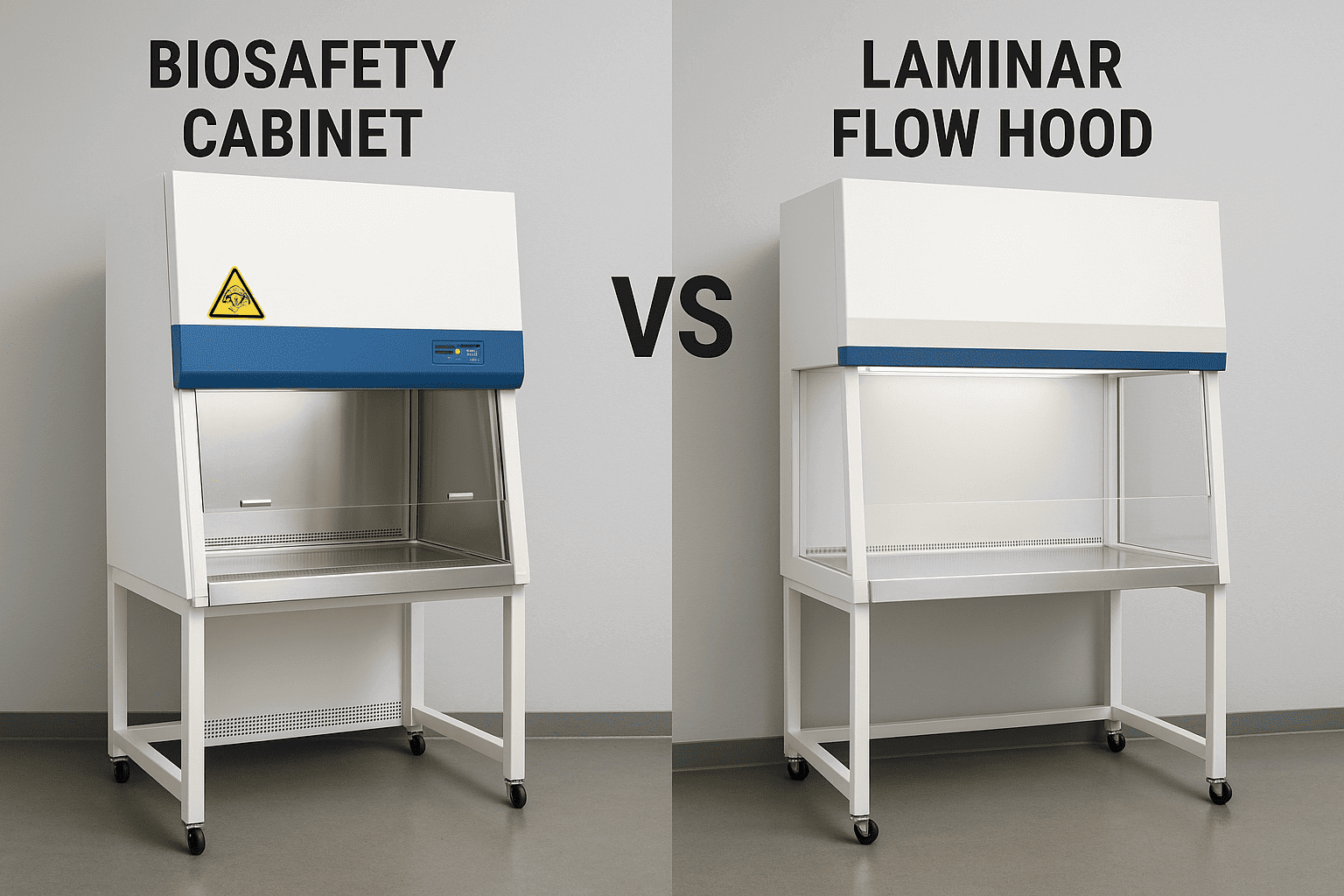
Maintaining both cabinets properly is crucial for their effectiveness:
1- Filter Checks: Regularly inspect HEPA filters for both cabinets to ensure they are functioning correctly.
2- Clean Surfaces: Wipe down work surfaces before and after use to prevent cross-contamination.
3- Proper Training: Ensure laboratory personnel are trained in the correct usage protocols for each type of cabinet.
4- Routine Certification: Both cabinets should undergo periodic certification to ensure compliance with safety standards.
Neglecting maintenance can compromise the sterile environment in laminar flow cabinets or reduce the protective capabilities of BSCs.
Choosing the Right Cabinet
Selecting the appropriate cabinet depends on the laboratory’s needs:
- If your primary concern is user and environmental safety while handling potentially dangerous biological samples, a biological safety cabinet is essential.
- If your goal is to maintain sterility of samples or materials without exposure to hazardous agents, a laminar flow cabinet is the ideal choice.
Laboratories can consult websites like chameza.in, labturnkey.in, and labcreator.in for detailed specifications, cabinet options, and expert advice on selecting the right equipment.
Conclusion
While biological safety cabinets and laminar flow cabinets might seem similar at first glance, their differences in purpose, airflow design, and protection levels are critical to understand. BSCs focus on safety for both users and materials, making them indispensable in infectious or hazardous environments. Laminar flow hoods, on the other hand, focus on maintaining the sterility of materials, making them suitable for applications that are sensitive to contamination.
By understanding these distinctions and following proper operational guidelines, laboratories can ensure both safety and efficiency in their day-to-day operations. For high-quality solutions, equipment suppliers like chameza.in, labturnkey.in, and labcreator.in providing comprehensive support and options tailored to specific laboratory needs.

